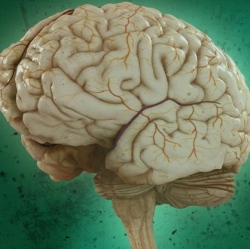
A team of neuroengineers at Brown University has developed a fully implantable and rechargeable wireless brain sensor capable of relaying real-time broadband signals from up to 100 neurons in freely moving subjects. Several copies of the novel low-power device, described in the open-access Journal of Neural Engineering, have been performing well in animal models for more than year, a first in the brain-computer interface field.
Brain-computer interfaces could help people with severe paralysis control devices with their thoughts. Neuroscientists can use such a device to observe, record, and analyze the signals emitted by scores of neurons in particular parts of the animal model’s brain.
Brain-computer interfaces (BCIs) are used to assess the feasibility of people with severe paralysis being able to move assistive devices like robotic arms or computer cursors by thinking about moving their arms and hands.
Previous BCIs have required wired systems (such as Braingate, also developed at Brown).
“This was conceived very much in concert with the larger BrainGate team, including neurosurgeons and neurologists giving us advice as to what were appropriate strategies for eventual clinical applications,” said Nurmikko, who is also affiliated with the Brown Institute for Brain Science.
Borton is now spearheading the development of a collaboration between EPFL and Brown to use a version of the device to study the role of the motor cortex in an animal model of Parkinson’s disease.
“This new wireless system addresses a major need for the next step in providing a practical brain-computer interface,” said neuroscientist John Donoghue, the Wriston Professor of Neuroscience at Brown University and director of the Brown Institute for Brain Science.
